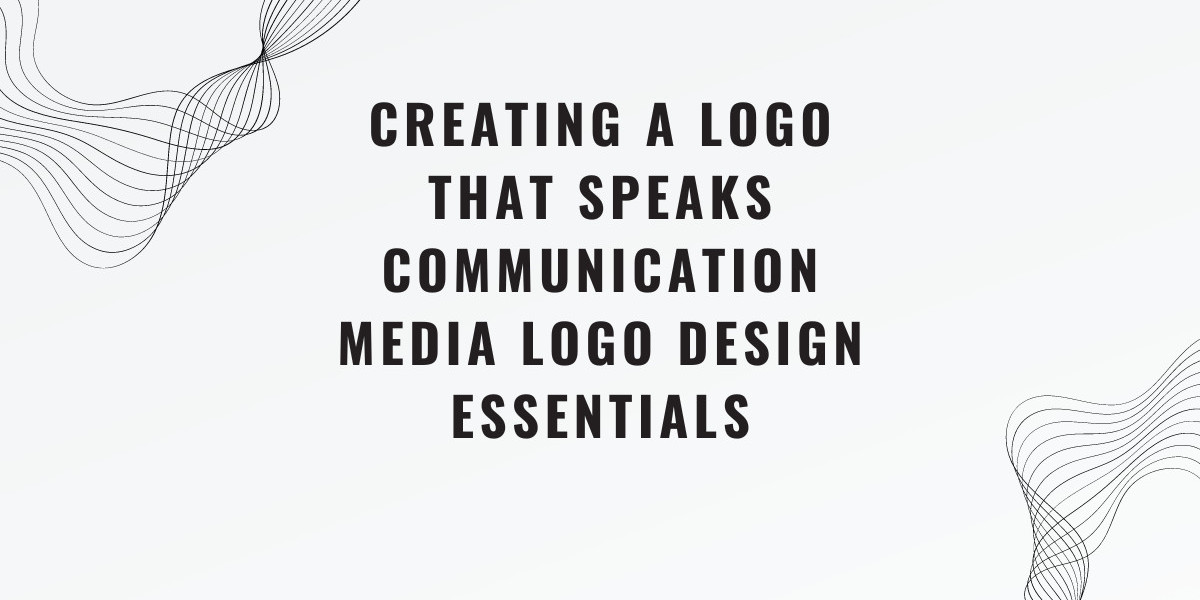Introduction
In the dynamic world of communication media, a well-designed logo is a cornerstone of your brand’s identity. It needs to capture the essence of your message, convey professionalism, and stand out in a crowded market. A logo is not just a visual element; it’s a strategic asset that speaks to your audience and communicates the core values of your media company. Effective communication media logo design uses modern and engaging elements. Here’s a guide to the essential elements of designing a logo that effectively represents your communication media brand.
1. Understand Your Brand Identity
Before diving into design, it’s crucial to have a clear understanding of your brand identity. What values, services, and messages do you want your logo to communicate? Are you focusing on digital media, traditional broadcasting, or a combination of both? Your logo should reflect your brand’s unique positioning and resonate with your target audience. Define your brand’s personality—whether it’s innovative, reliable, creative, or authoritative—and let this guide your design choices.
2. Choose Colors that Reflect Media Trends
Color psychology plays a significant role in logo design, especially in the communication media industry. Colors should align with the modern and dynamic nature of media while also reflecting your brand’s identity. Consider using vibrant and energetic colors like blue, red, and yellow to convey creativity, trust, and enthusiasm. Alternatively, more subdued tones like gray and black can suggest professionalism and sophistication. Ensure your color palette is versatile and works well across various media platforms and formats.
3. Incorporate Relevant Imagery
Imagery in your logo should be relevant to the communication media industry and reinforce your brand’s message. Common elements include symbols related to broadcasting, digital communication, or media production, such as microphones, speech bubbles, or video cameras. However, avoid clichéd or overused icons. Instead, aim for unique and modern representations that differentiate your brand and capture the essence of your services.
4. Select Modern and Readable Typography
Typography is a critical component of logo design, particularly for communication media brands. Choose fonts that are modern, clean, and highly readable. Sans-serif fonts often work well for media logos due to their sleek and contemporary appearance. Ensure that your typography is legible at various sizes, as your logo will be used in different contexts, from business cards to digital platforms.
5. Design for Versatility
A well-designed logo should be versatile and adaptable to various formats and sizes. It should look equally effective on a website, social media profile, business card, and promotional materials. Consider how your logo will appear in both color and black-and-white formats to ensure it maintains its impact and clarity. A versatile logo ensures consistent branding across all your communication channels.
6. Emphasize Simplicity and Clarity
In the fast-paced world of communication media, simplicity and clarity are key. Avoid overly complex designs that can be confusing or difficult to reproduce. Aim for a clean and straightforward logo that conveys your message quickly and effectively. A simple design is more memorable and easier for your audience to recognize and recall.
7. Reflect Innovation and Creativity
Communication media is an ever-evolving field that thrives on innovation and creativity. Your logo should reflect these qualities and position your brand as forward-thinking and cutting-edge. Incorporate elements that suggest dynamism and adaptability, such as abstract shapes or innovative design techniques. Your logo should convey that your brand is at the forefront of media trends and technology.
8. Test and Refine Your Design
Once you have a draft of your logo, test it across different applications and gather feedback from stakeholders and potential clients. Evaluate how well it communicates your brand’s message and whether it resonates with your target audience. Use this feedback to make necessary refinements and ensure your logo effectively represents your communication media brand.
Conclusion
Creating a logo that speaks effectively for your communication media brand involves a thoughtful approach to design elements, color, imagery, typography, and overall brand identity. By understanding your brand’s core values, choosing relevant colors and imagery, and focusing on modern, readable typography, you can craft a logo that conveys professionalism and innovation. Emphasizing versatility, simplicity, and creativity will help ensure your logo stands out in a competitive market and effectively communicates your brand’s message. Testing and refining your design based on feedback will further enhance its impact, creating a strong and memorable visual identity for your communication media brand.



